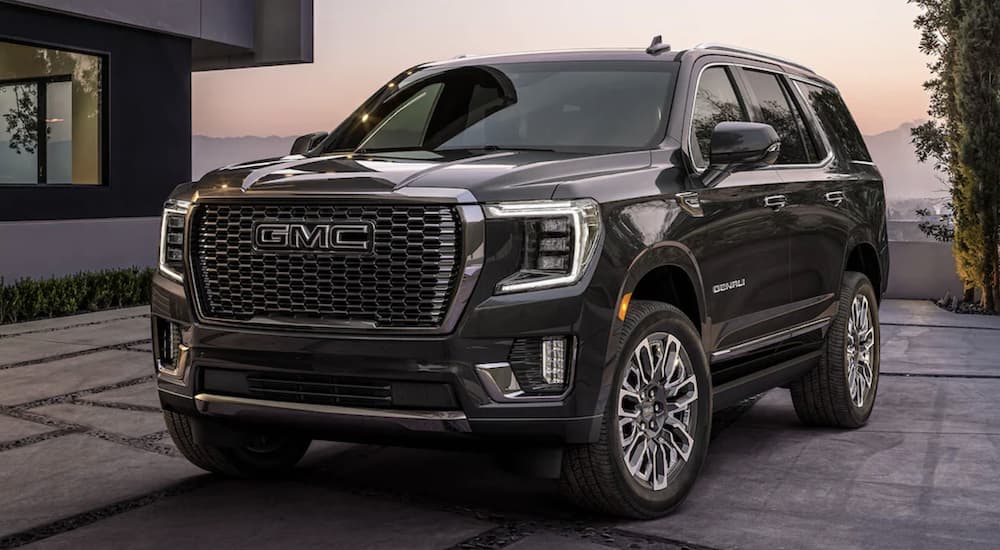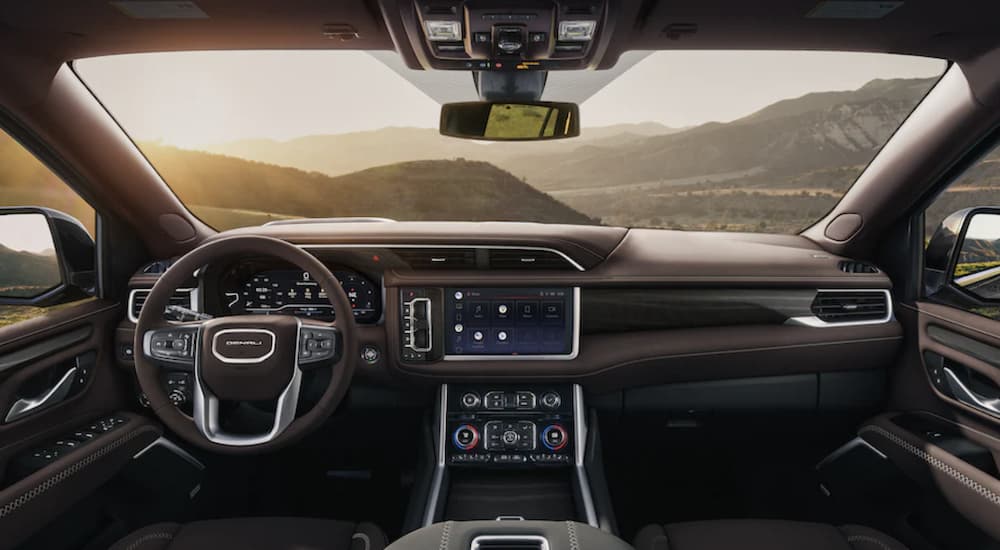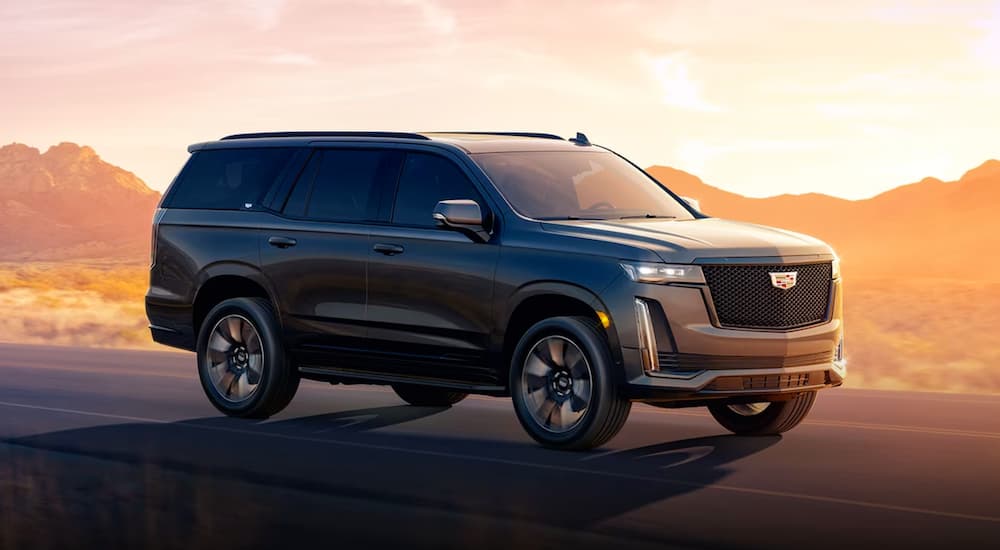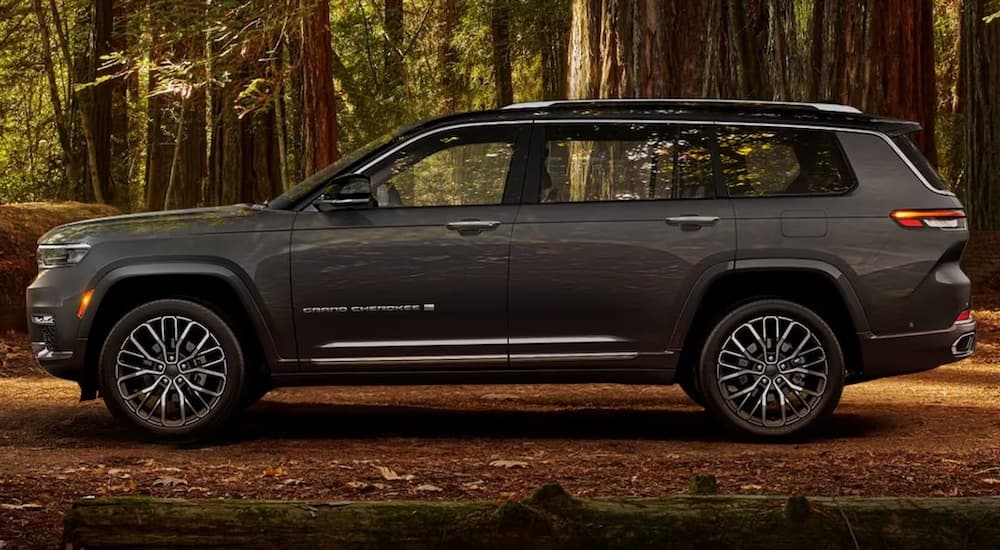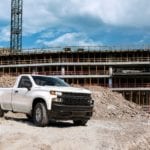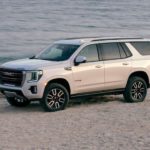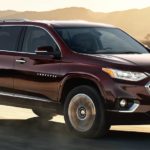Few vehicles can match the pure cargo space, passenger capacity, and utility of a full-size SUV. While the market has been skewing towards smaller crossovers as of late, there will always be a place for full-size SUVs. They might not be able to match crossovers in terms of pure efficiency or affordability, but when you’re looking for a spacious people-mover that can double as a storage unit on wheels, it’s hard to beat a full-size SUV.
Of course, not all full-size SUVs are created equal. A vehicle’s wheelbase––that is, the distance between the front and rear axles––represents another important consideration. Say you’re on the hunt for a GMC Yukon XL for sale. With a 134-inch wheelbase and 225-inch length, this full-size SUV is one of the longest in the market, measuring a full 15 inches longer than the standard-length GMC Yukon and providing drivers with all the space, comfort, and pure volume they need to ensure a satisfying driving experience.
The GMC Yukon XL might be long, but it’s still not the longest model on offer for 2024. Other brands like Jeep and Cadillac boast their own extended-wheelbase behemoths, so how do these full-size SUVs stack up when it comes to performance, amenities, and pure size? We’ll compare some of the industry’s longest full-size SUVs, see which are worth the investment, and explore the myriad advantages of a long-wheelbase (LWB) SUV.
Long-Wheelbase Pros and Cons
Ride quality is often one of the main reasons drivers are drawn to LWB vehicles like the GMC Yukon XL. While full-size SUVs might typically prioritize utility over comfort, these LWB models go a long way in closing the gap, thanks to the fact that there’s simply more space between the front and rear wheels. This means that when the front wheels of an LWB vehicle hit a bump, pothole, or some other obstacle in the road, the SUV has a chance to absorb the impact and regain equilibrium before the rear wheels hit the same obstacles. This extra space between the front and rear wheels also goes a long way in improving overall vehicle stability––especially when cornering––creating a more pleasant ride for driver and passengers alike.
Aside from comfort, pure size tends to be a LWB model’s biggest selling point. The more space between the front and rear wheels, the larger the vehicle, meaning there’s plenty of room for passengers, cargo, and whatever else you can stuff in. LWB vehicles also have more legroom and rear-seat space than their short-wheelbase (SWB) counterparts, making them a more comfortable choice for larger families or long road trips. As the “XL” suffix would imply, models like the GMC Yukon XL have made this sort of spaciousness a key selling point.
There are some drawbacks to the LWB approach, especially when it comes to a vehicle’s turning radius. The turning radius––which describes the minimum amount of space required to perform a U-turn––can be an important factor when navigating tighter streets or parking, so how do LWB and SWB vehicles compare when it comes to this particular attribute? Generally speaking, LWB vehicles will have a larger turning radius than a SWB model, which can be a make-or-break factor for some drivers.
2024 GMC Yukon XL
The GMC Yukon’s biggest selling point is probably its spacious cabin. This attribute, which is what draws so many drivers to the full-size SUV segment in general, is taken to an extreme on the Yukon XL. The SUV was already GMC’s most spacious offering, but that reputation got a shot in the arm with the debut of the most recent generation in 2021. For the first time, GMC built the full-size SUV with an independent rear suspension, which, in addition to improving the Yukon XL’s ride quality and handling, also allowed for a roomier cabin. Thanks to the independent rear suspension, GMC was able to lower the SUV’s floor, creating more cargo room and legroom while allowing GMC to introduce an all-new fold-flat third-row seat.
That fold-flat seat ups the Yukon XL’s total cargo volume to 144.7 cu.ft., which is almost 22 cu.ft. more than the base Yukon. The LWB SUV also boasts 93.8 cu.ft. of cargo space behind the second row and 41.5 cu.ft. behind the third row, which should be more than enough space for most applications. The Yukon and Yukon XL are pretty well-matched when it comes to legroom, mirroring each other’s dimensions aside from the third row, where the Yukon XL provides almost two additional inches. That might not sound like much, but any adult who gets forced into the way back will probably appreciate the extra space.
But the GMC Yukon XL is about more than just pure space. The Yukon XL might be very similar to its mechanical twin in the Chevy Suburban, but while Chevy’s version trades on pure volume, GMC has emphasized interior tech, design, and materials in building the Yukon XL. Sure, the Yukon’s 355 hp and 420 hp V8 engines are impressive in their own right, but it’s the SUV’s creature features that really set it apart, especially when you get into the high-end Denali and Denali Ultimate trims. The Yukon XL Denali isn’t cheap, but it does add a long list of luxury materials and features to the mix, including a wood-trimmed dashboard, hand-stitched leather upholstery, a power-sliding center console, and a chrome-trimmed infotainment display.
2024 Cadillac Escalade ESV
You can’t talk about full-size SUVs without mentioning one of the segment’s most iconic models: the Cadillac Escalade. With a high price tag, the standard Escalade is a luxury model through and through. However, the Escalade ESV takes things even further with an extended wheelbase for greater room and comfort.
The Escalade ESV’s three-ton curb weight and massive size translate into some less-than-stellar fuel efficiency. Still, Cadillac has at least tried to engineer around the problem by giving the 6.2-liter V8 the ability to deactivate half of its cylinders when they’re not called for. At 16 MPG combined, the 2024 Escalade ESV’s gas engine is right on par for its class, though drivers seeking a more efficient ride should look into the 3.0-liter diesel inline-six. Rated for 23 MPG combined, the diesel is the Escalade’s thriftiest powertrain.
On the other end of the efficiency spectrum is the performance-minded Cadillac Escalade-V, which adds a supercharger to give the V8 some 682 hp and 653 lb-ft of torque. Sure, there might not be a lot of occasions to spin your massive LWB SUV from zero to 60 mph in 4.3 seconds, but it’s nice to know that the Escalade-V is capable of such a feat.
Unsurprisingly, the Escalade ESV is one of the most luxurious SUVs on the list, with a long list of high-end features, including extra-soft semi-aniline leather, adjustable interior ambient lighting, a three-screen digital dashboard with 38 inches of display real estate, rear-seat displays, an optional 36-speaker AKG Studio Reference audio system and more. But the Cadillac’s most intriguing feature might be its Super Cruise hands-free driving technology. Consistently ranked as one of the top hands-free driver assistance systems on the market, Super Cruise elevates the driving experience by removing “driving” from the equation altogether. While the system still requires the driver to remain attentive and ready to take control, it’s an alluring look at the future of just what personal transportation could be.
2024 Jeep Grand Cherokee L
The Jeep Grand Cherokee L is easily the most affordable LWB model on our list, but there’s a catch. While every other LWB SUV we’ve mentioned is built using the traditional body-on-frame design, Jeep has opted for a unibody approach in designing the Grand Cherokee L. There’s nothing wrong with this, per se, and it does go a long way in lowering the price, but those seeking the rough-and-tumble performance of a body-on-frame SUV might find the Grand Cherokee L a bit of a mixed bag. On the upside, the unibody design means that the Grand Cherokee L is lighter and more fuel-efficient than its body-on-frame competitors while offering improved ride comfort and handling.
Still, the Jeep Grand Cherokee L holds its own when it comes to cargo space. With a 121.7-inch wheelbase, the Jeep Grand Cherokee L is a good foot shorter than the Yukon XL but still manages to provide a generous 159 cu.ft. of passenger space and 84.6 cu.ft. of cargo volume. These numbers might seemingly pale against some of the others on the list, but there’s a good reason for that. This SUV is technically classified as a midsize SUV, but Jeep offers the Grand Cherokee L as a three-row LWB model as opposed to the basic, two-row Grand Cherokee.
The 2024 Grand Cherokee L is available with either a 293 hp V6 or 357 hp V8 and comes in both rear-wheel drive and four-wheel drive configurations but is limited to a single transmission in the form of an eight-speed automatic. With a 7,200 lb towing capacity, the Grand Cherokee L isn’t afraid to put in a little work, but it also knows how to kick back and relax with massaging seats, quilted leather upholstery, open-pore wood trim, second-row captain’s chairs, and more. While the 10.1-inch infotainment display, in-vehicle navigation, and available 19-speaker McIntosh audio system are nice, our vote for standout tech feature would have to be a pair of 10.1-inch screens that can be mounted to the backs of the front seats to provide second-row passengers with enough of a distraction to stay out of your hair on longer trips.
Long-Wheelbase SUVs Aren’t Going Anywhere
While the rise of smaller crossover SUVs is hard to ignore, larger three-row, long-wheelbase models will be around for some time to come. For those seeking the best in cargo room, passenger capacity, and performance, the segment is hard to beat. At the end of the day, choosing between a three-row LWB SUV and a smaller model often comes down to how the SUV is going to be used. If you see a lot of towing in your future, are chronically in need of a little extra space, or prioritize comfort above all else, an LWB SUV might be the way to go. If, on the other hand, you’re looking to try your hand at a little off-road fun where the ability to nimbly navigate the trail and clear obstacles like fallen trees and boulders is important, a SWB model might be worth the investment. No matter which model you choose, brands like GMC, Cadillac, and Jeep offer a wide range of SUVs that are worth a test drive for any driver seeking a reliable daily ride.
